| Published
on 18
Aug
2023 |
All rights reserved.
|
|
|
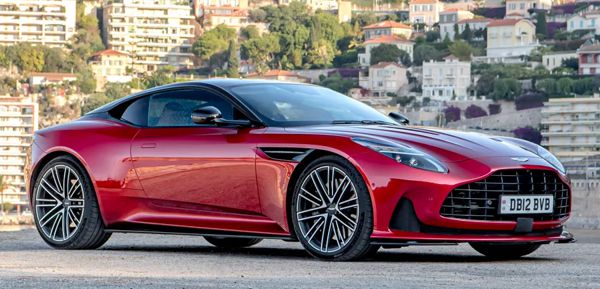 |
|
The
DB12 is not perfect, but it is an important step forward for Aston
Martin and probably the start of a new era.
|
|
7 years ago, we thought
Aston Martin built an excellent GT in the form of DB11. It was the
brainchild of CEO Andy Palmer, engineering chief Ian Minards and design
boss Marek Reichman. However, that car had its weaknesses. Its interior
design and build quality were not up to the level of its class. Its
Mercedes-sourced infotainment system was seriously outdated, as
Stuttgart declined to share its latest version with Gaydon. Compared
with Ferrari's GT cars, the Aston was short of performance and
handling, while customers seeking comfort and luxury would opt for
Bentley Continental GT. That put it in a very difficult position.
When Lawrence Stroll and his partners took over the company 3 years
ago, he appointed then-AMG boss Tobias Moers to replace Palmer. Minards
left, replaced by more AMG engineers. Ambitious new programs started by
the outgoing management, such as the new twin-turbo V6 and the
mid-engined Vanquish, were eventually dropped. Moer preferred a more
evolutionary, down-to-earth approach. He introduced much improved
versions of existing cars like DB11 AMR, Vantage F1 edition, DBX 707
and DBS 770 Ultimate, narrowing the performance gaps between Aston and
its rivals. Unfortunately, before his work come to fruition, he had
been sacked by the impatient Stroll in May 2022. Ex-Ferrari CEO Amedeo
Felisa was tasked to turnaround the ailing British company. Felisa was
already 75 then, but he brought his former colleague Roberto Fedeli to
England, who led the development of Ferrari 458, LaFerrari and Alfa
Romeo Giulia, to name a few. I suppose the new DB12 is largely the work
under Moer and his German guys, but the Italian finishing touch
may also prove to be influential to the latest British luxury GT.
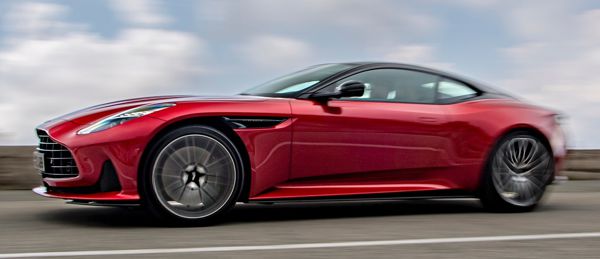 |
|
DB12
might be largely the work of Tobias Moer and his German guys, but the
finishing touch of ex-Ferrari engineer Roberto Fedeli may be equally
important.
|
|
At the first glance, the DB12 seems just a mid-life refresh
of its predecessor. Yes, the basic chassis is carried over, as you can
see from its near identical profile and more or less the same
dimensions, most notably the unchanged wheelbase. It is merely 40 mm
wider, and that is made to accommodate its larger wheels (now 21
instead of 20-inch) and wider rubbers. Aston even keeps the
aerodynamics unchanged (i.e. the intakes under the C-pillars that draw
airflow towards the narrow outlet located just above the trailing edge
of rear deck), so that it doesn't need to spend hundreds of hours in
wind tunnel again.
This means, the change of exterior styling concentrates on the nose: it
adopts the biggest ever grille on an Aston Martin. Part of that is for
visual appeal, giving the car a stronger identity, but the increased
cooling demand also play a role here.
The DB12 is not planned to offer a V12 engine, at least that is what
the company claimed at the moment. It offers only AMG's 4-liter
twin-turbo V8, but this version is significantly more powerful –
actually surprisingly powerful. While the outgoing DB11 V8 had to
settle with 510 hp and 498 lbft, this one produces 680 horsepower at
6000 rpm and 590 lbft of torque at 2750-6000 rpm. In fact, more
powerful than any AMG's own cars except the flat-plane crank version of
AMG GT Black series. The Aston version keeps conventional cross-plane
crank and wet sump, so it is not off the shelf but a dedicated unit
built by Affalterbach. The increased output comes primarily from a pair
of much bigger turbos, which necessitates the engine to drop its
compression ratio from 10.5:1 to 8.6:1. Besides, the cam profiles are
different, and the intercoolers and oil cooler have been upgraded along
with larger surface radiators, hence the bigger grille.
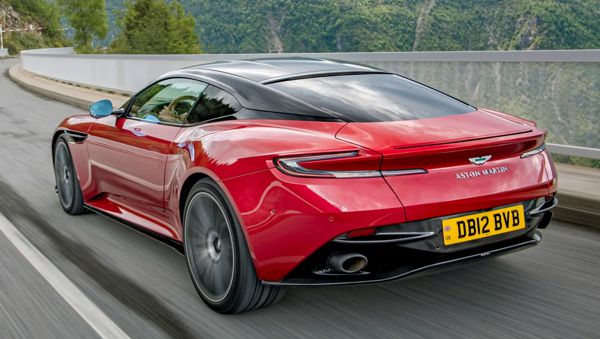 |
|
The
AMG V8 produces 170 hp more than before, eclipsing the old V12 as well.
|
|
Transmission remains to be ZF 8-speed automatic, and it still sits at
the rear axle for better balance. Recalibrated program results in
quicker shifts, while a 13-percent shorter final drive ratio also
enhances
acceleration. Aston quotes 0-60 mph done in 3.5 seconds, not only
quicker than the outgoing DB11 V8 (3.9 sec) but also the V12-powered
AMR (3.6 sec). The new car tops 202 mph, slightly lower than the 208
mph AMR due to the final drive ratio.
But handling should be no comparison. Thanks to the first adoption of
electronic differential, the DB12's weight distribution is even more
rear-biased, standing at 48:52, compared with 49:51 of DB11 V8 and
51:49 of DB11 AMR. Besides, the DB12 also has its stability control
upgraded with 6-axis inertia measurement. Hopefully its traction and
at-the-limit handling can be greatly improved.
The wider rubbers also help. To cope with increased power, the DB12
employs 275/35ZR21 up front and 315/30ZR21 at the rear, which are 20 mm
wider than before yet larger in diameter. It is the first application
of Michelin Pilot Sport 5S tires, which incorporates noise-absorption
foams to cut road noise, something not unimportant for a GT.
The chassis itself is largely unchanged, but parts like engine cross
brace, front cross member, rear bulkhead and undertrays are
strengthened, upping torsional rigidity by 7 percent and even more
around the suspension mounting points. The adaptive dampers have been
updated, too, offering broader range of adjustment, while stiffer
anti-roll bars should tighten body control. Meanwhile, the steering
column is now rigidly mounted to improve precision and feel. All in
all, the DB12 should feel a lot sportier than its predecessor in
cornering.
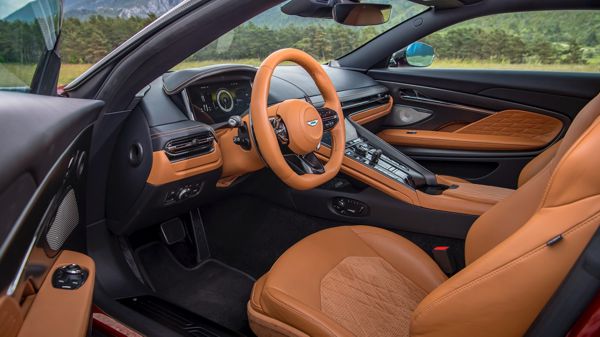 |
|
All-new
interior improves massively in technology.
|
|
Inside, the change is quite dramatic. The influence of Moers
is obvious in the way it adopts a Porsche-like center console design,
which should bring improved ergonomics if not style. The instrument is
finally a flat panel display. The infotainment touchscreen is not
terribly large at 10.25-inch, but it is high definition, and Aston
claims very quick response and intuitive user interface thanks to its
in-house designed software. Thankfully, the sloping console leaves
plenty of quality-looking physical switches, which is very important to
the traditional customers of Aston Martin.
Aston quotes a kerb weight of 1788 kg, just 28 more than the DB11 V8,
which is surprisingly modest considering the addition of E-diff, 170
horsepower and so many other improvement to the chassis. However, that
figure has taken all lightweight options into account, including
carbon-fiber shell bucket seats. Even in the leanest form, the DB12 is
priced at £185,000, 40 grands more than the DB11 V8 and 10 grands
dearer than the V12 AMR. As DBS Superleggera is no longer in
production, the DB12 can be pushed further upmarket. Its more
aggressive looks and sportier driving dynamics match its new market
positioning.
On the Road
The DB11 used to bridge between the sporty Ferrari Roma and the luxury
Bentley Continental GT. The DB12 still stands between them, but it
edges closer to the territory of Ferrari. Yes, it is quite a lot longer
in wheelbase and 200 kg heavier than the Roma, therefore not quite as
agile as the Ferrari, but it feels far sportier than the DB11. No
matter acceleration, engine, transmission and chassis, all responses
are significantly quicker, sometimes even brutal. The V8 surges from
3000 rpm and pushes relentlessly until 7000 rpm redline. It sounds
angrier than the last V8, too, although not in the magnitude of the
outgoing V12. The kind of acceleration it achieves borderline between
GT and supercar, so quick that I doubt if anyone would ask for more.
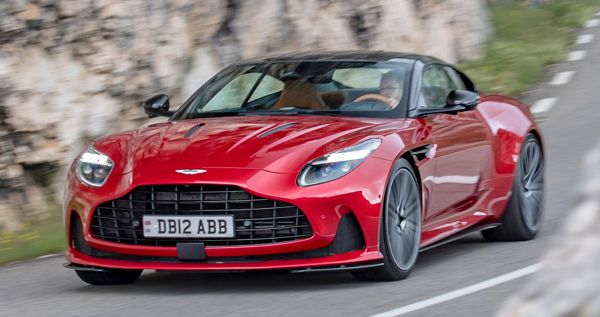 |
|
No
matter acceleration, engine, transmission and chassis, all responses
are significantly quicker, sometimes even brutal.
|
|
While the DB11’s chassis was nicely absorbing, its successor
feels far sportier. The chassis feels more rigid than the numbers
suggested. The turn-in is more instantaneous. Body control is tighter.
It storms through fast corners with minimum fuss. Chassis balance is
superb, too, as there is little hint of understeer. Despite the stiffer
suspension setup, the DB12 still does the GT job very well, absorbing
all but the worst bumps. The new 5 S tires generates less road noise,
although wind and mechanical noise isolation still trails Bentley by a
long way.
Being an Aston Martin, there are some flaws, of course. The DB12 feels
too wide for country roads. Its gearshift and electronic differential
are a bit hesitant in slow corners. This means, while its driving
manner gets closer to the Ferrari, it prefers fast roads and fast turns
like conventional GTs. Some of its problems are down to insufficient
development. For example, the brake pedal actuation lacks linearity.
The infotainment software interface lacks polish. These problems could
be sorted in time, but it should have been done before launch. Some
problems are more fundamental and unlikely to be rectified, such as
tiny rear seats and boot, which might matter less if not the arrival of
new Maserati GranTurismo. You might also hope for better cabin
materials and craftsmanship, which is significantly improved from the
old car, but still trails Bentley by some way.
Perhaps all those expectations are too much for what is essentially a
facelifted car. The DB12 is not perfect, neither is it outstanding in
any particular area, but it is an important step forward for Aston
Martin. After years of financial woes and management instability, let’s
hope it is the start of a new era.
|
Verdict:     |
|